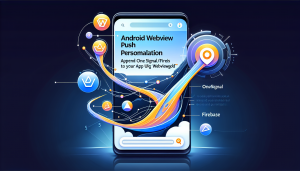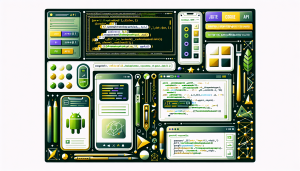
Understanding Pull-to-Refresh in Android Apps
Modern mobile apps are expected to deliver not just content, but a seamless and intuitive user experience. One of the most popular UI patterns that fulfills this expectation is pull-to-refresh—a gesture-based interaction where users can refresh app content by pulling down on the screen. Originally popularized by social media and email apps, this feature has become a standard in Android development, enabling quick and convenient content reloading.
The Role of WebView in Android App Development
Android’s WebView component is a versatile tool for displaying web content within native apps. Many businesses rely on WebView to convert their websites into functional Android applications, reducing development time and costs. However, integrating modern UI elements like pull-to-refresh can be challenging without the right tools or frameworks.
Implementing Pull-to-Refresh: The Native Approach
To provide a familiar pull-to-refresh experience in a WebView-based app, developers typically combine WebView with the SwipeRefreshLayout widget from the Android support library. This layout acts as a wrapper around the WebView, enabling the pull-to-refresh gesture. Here’s a high-level overview of the steps involved:
- Wrap your WebView inside a
SwipeRefreshLayoutin your activity’s layout file. - Set up an
OnRefreshListenerto reload the WebView when the user pulls down to refresh. - Manage the loading spinner’s state based on the WebView page load events.
While this approach works, it requires careful handling of events such as page finishes, errors, and navigation to avoid unwanted refreshes or UI glitches.
Simplifying the Process with WebViewGold
For those seeking a hassle-free method to bring their website to the Android platform with modern UI capabilities, WebViewGold presents an attractive solution. WebViewGold allows users to convert websites into fully functional Android apps quickly and easily, with minimal coding required. Not only does it streamline the setup of pull-to-refresh and similar gestures, but it also incorporates a wide range of best practices for performance, security, and user experience.
By choosing WebViewGold, you can implement pull-to-refresh and other advanced features without delving into the intricacies of Android UI development. The result is a polished app experience that aligns with user expectations and current design trends.
Benefits of Enhanced User Experience
Incorporating pull-to-refresh in your Android WebView app offers several benefits:
- Improved Interactivity: Users can easily reload content with a simple swipe gesture.
- Familiarity: Pull-to-refresh is a widely recognized pattern, ensuring your app feels up-to-date and intuitive.
- Increased Engagement: A frictionless refresh experience encourages users to interact with your app more frequently.
Conclusion: Modernizing Your WebView App
Adopting contemporary UI patterns like pull-to-refresh is an effective way to enhance your Android app’s usability and appeal. Whether you choose to implement this feature manually or leverage a ready-made solution like WebViewGold, prioritizing fluid user interactions will set your app apart in today’s competitive market. With WebViewGold’s quick and easy conversion process, staying ahead of user experience trends has never been more accessible.




